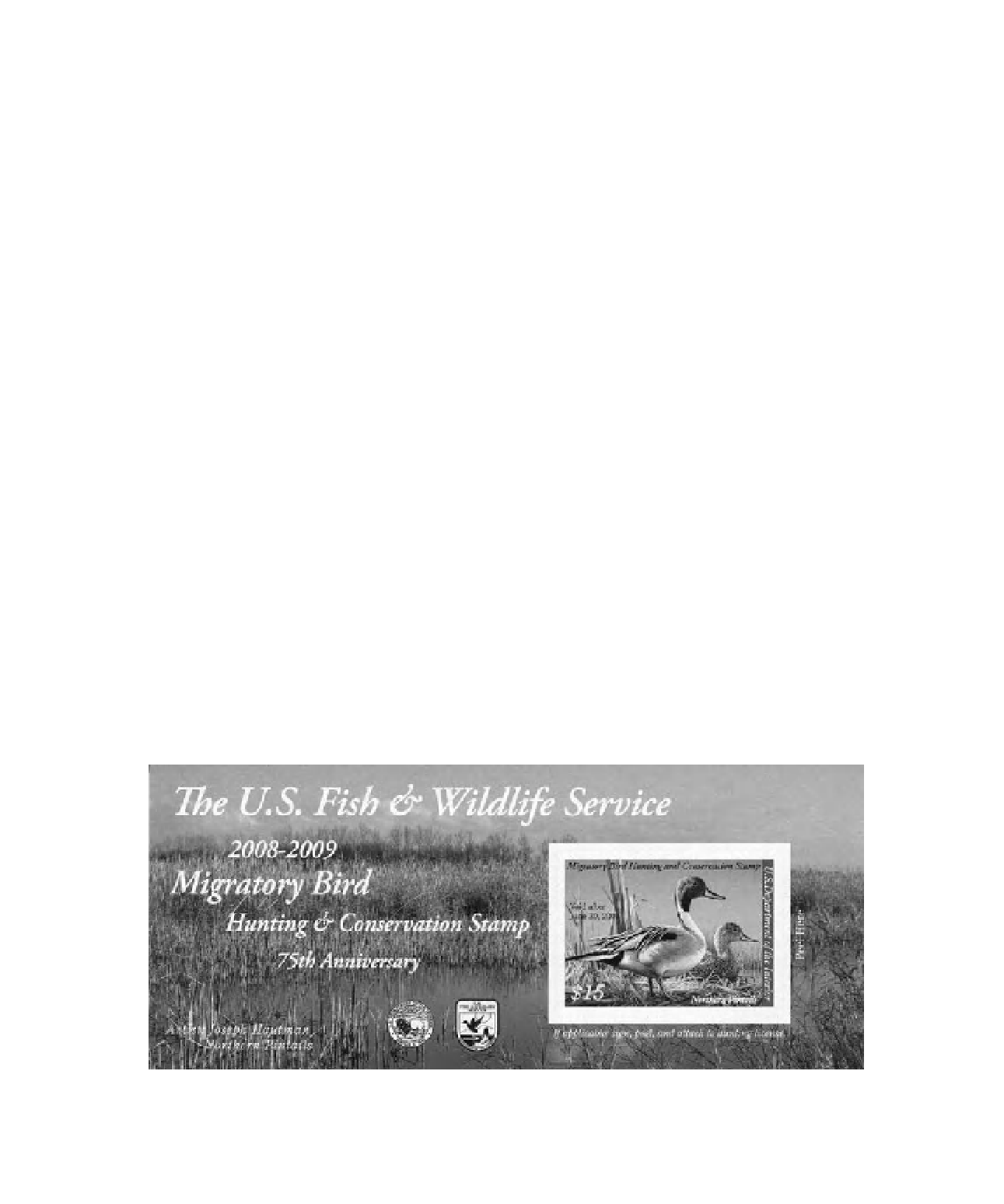Geoscience Reference
In-Depth Information
14.3.1 United States
policies were inl uenced by pro-development
philosophies and resulted in dramatic change
and acreage declines in wetland landscapes
across the country.
Even so, early sustained efforts by duck
hunters and other conservation enthusiasts led
to the eventual creation of the National Wildlife
Refuge system, which promoted the early pres-
ervation of habitats including wetlands for
waterfowl species (Lewis 2001) and was sup-
ported by Migratory Bird Hunting and Conser-
vation Stamps, so-called “duck stamps” (Fig.
14-3). Other early legislative victories included
the Migratory Bird Treaty Act of 1918 and the
Migratory Bird Conservation Act of 1929, which
recognized the importance of sustaining water-
fowl and bird populations and in turn their
wetland habitats (National Wildlife Refuge
System 2010).
The 1960s heralded a new era of environ-
mental legislation and policy initiatives in the
United States
-
not necessarily limited to wet-
lands. The Federal Water Pollution Control Act
Amendments of 1972, now also known as the
Clean Water Act, sought to restore and maintain
the overall health of the nation's waterways.
Section 404 of the Clean Water Act provided
federal jurisdiction through a permit system for
any dredge-and-i ll activity within the “waters of
the U.S.” Due to the lack of specii city on the
part of the U.S. Congress, the U.S. Army Corps
The United States was a comparatively early
entrant into the realm of wetland protection.
Today, it ranks among those that closely regu-
late the development of wetland habitats. Yet,
this was not always the case. Nineteenth-century
United States policy toward wetlands was to
impound, drain and alter them into what were
considered more economically productive land
uses. This policy was promoted by the Swamp
Land Acts of 1849, 1850, and 1860, which
allowed for the drainage of wetlands and the
expansion of agriculture and urban develop-
ment (Wheeler et al. 1995; Williams 1990). Many
rivers were modii ed substantially for navigation
and hydropower purposes (Fig. 14-2). As
Tzoumis (1998) reported, these and other
Figure 14-2.
U.S. postage stamp commemorating
modii cation of the lower Arkansas River for navigation
and hydropower purposes. Issued in 1968; original
stamp printed in blue and black. From the collection of
J. Vancura.
Figure 14-3.
U.S. Fish and Wildlife Service 2008-09 Migratory Bird Hunting and Conservation Stamp
commemorating the 75th anniversary of the duck-stamp program. Original stamp printed in full color.






